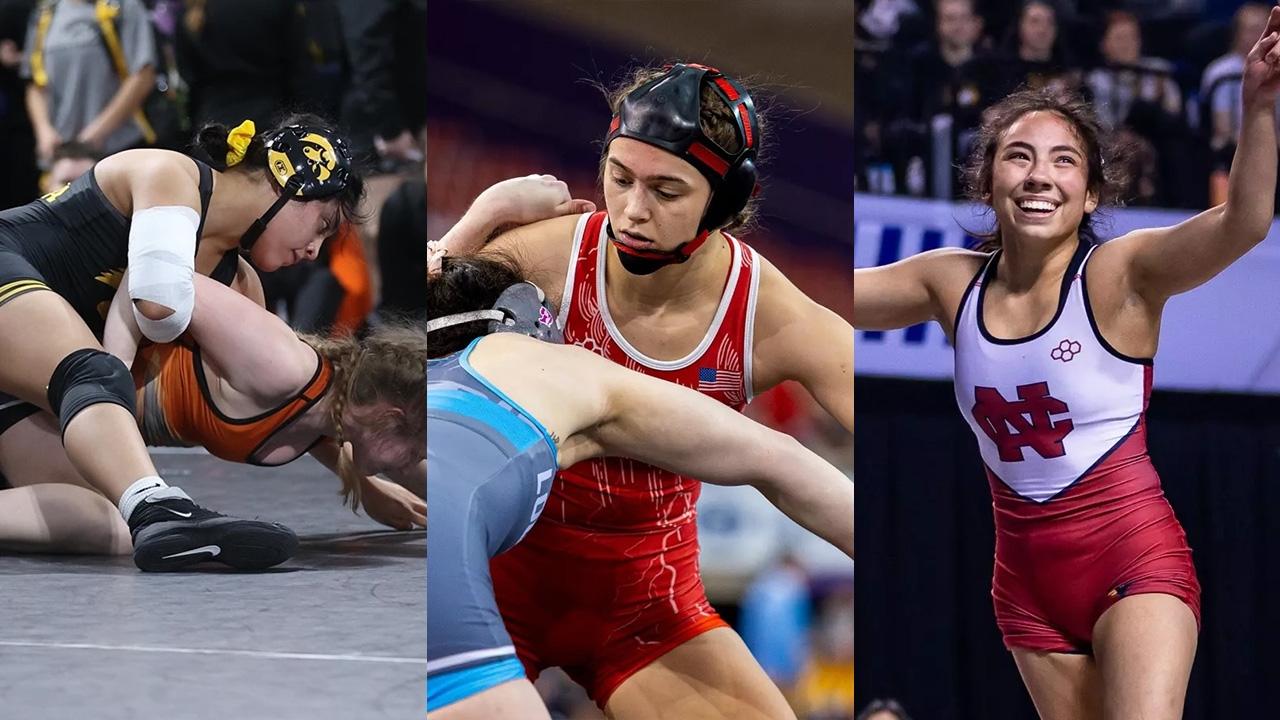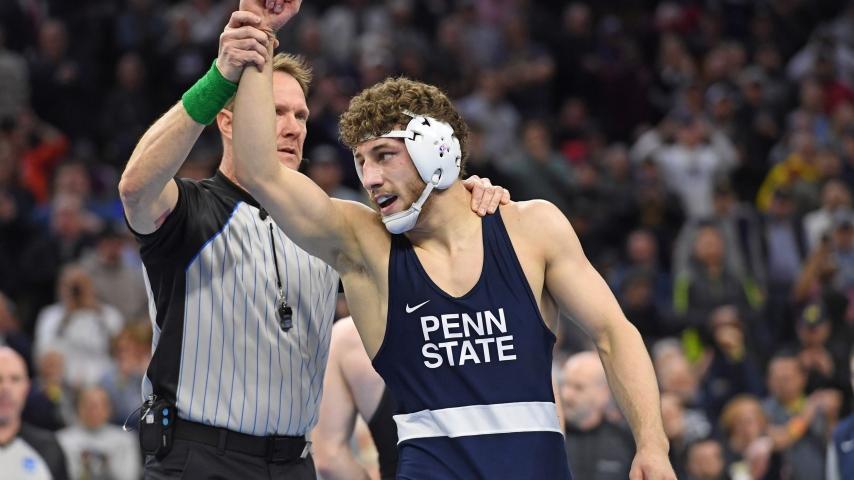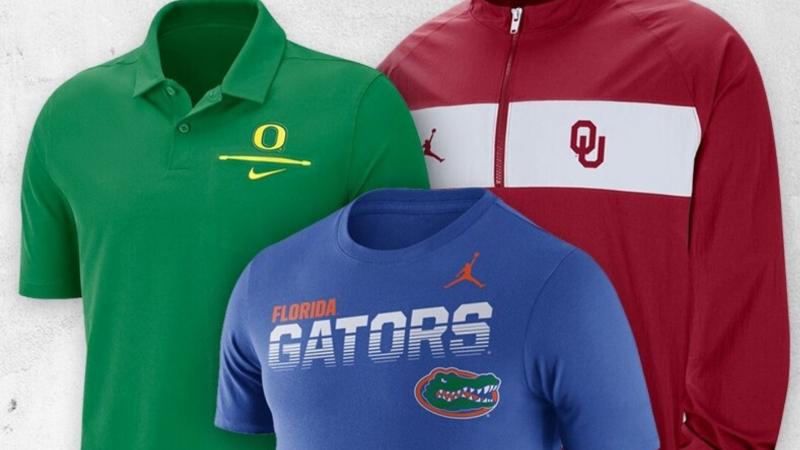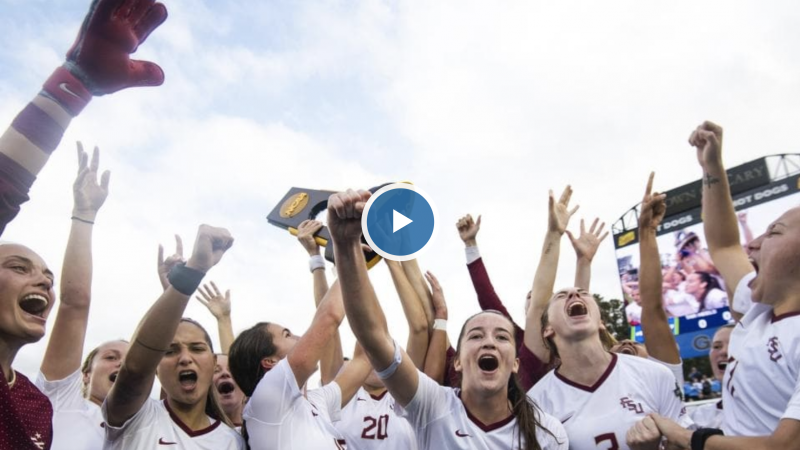The 2025-26 season will mark the first year of women’s wrestling as an NCAA championship sport. Here’s everything you need to know about women’s wrestling as a collegiate sport and what to expect in this opening season.
How did we get here?
Wrestling first became an NCAA emerging sport for women in 2020 alongside acrobatics and tumbling. The "emerging sport" pathway was created by the NCAA to identify potential future championship sports for women as a way to create new opportunities for competition and new options for schools looking to add sponsored sports. In order to qualify for emerging sport status, at least 20 schools need to offer the select sport.
Receiving emerging sport status put women’s wrestling on a championship path, provided that enough schools sponsored programs in a timely manner. To reach championship status, 40 schools needed to offer varsity teams on their respective campuses. Iowa became the first Power 5 school to offer such a team the following year.
WOMEN'S WRESTLING TIMELINE: The biggest moment in the sport at the collegiate level
By 2023, more than the required 40 schools had sponsored programs. The NCAA Committee on Women's Athletics recognized the progress of the sport in early 2024, recommending that DI, DII and DIII leaders vote to elevate the sport to championship status. This vote became official in January 2025.
What does championship status mean?
Championship status for women’s wrestling means that athletes can now officially compete for NCAA titles in sanctioned NCAA championship events. This distinction also creates the potential for more growth and investment in the sport as well as an additional opportunity to develop future Olympic champions, especially given that women wrestlers will compete for NCAA titles in freestyle, the same style that they compete in for the Olympics.
ICYMI 🚨
— NCAA Men's Wrestling (@NCAAWrestling) February 8, 2024
Today women’s wrestling took a big step toward becoming the 91st NCAA championship sport, with its projected first NCAA championship occurring in winter 2026.#NCAAWrestling x @ShannonScovel pic.twitter.com/jqo32Ng8QC
When is the NCAA championship?
The first NCAA women’s wrestling championship will be March 6-7 in Coralville, Iowa and will include teams from Division I, Division II and Division III.
How will athletes qualify for the NCAA tournament?
Wrestlers will qualify for the NCAA tournament through one of six regional tournaments held around the country from Feb. 20-22. Thirty athletes will qualify from each region for a total of 180 athletes.
CHAMPIONSHIP HANDBOOK: The complete rules for qualifying for the 2026 NCAA women's wrestling tournament
Teams hoping to qualify athletes from the regional tournament to the national tournament will need to have participated in a minimum of seven duals with at least six athletes participating in each dual.
What are the weight classes for women’s wrestling?
NCAA Women’s wrestling will include athletes at the following 10 weight classes: 103 pounds, 110 pounds, 117 pounds, 124 pounds, 131 pounds, 138 pounds, 145 pounds, 160 pounds, 180 pounds and 207 pounds.
What is the style of wrestling?
The women wrestling in the NCAA will compete in freestyle wrestling, the style that matches Olympic wrestling. This differs from the men’s championship sport, as athletes compete in folkstyle.
How are matches scored?
Freestyle scoring differs from folkstyle scoring in two key ways: 1.) athletes in freestyle cannot be rewarded for escapes. The focus remains on the offense. 2.) Athletes must wrestle within the circle. Pushing out another athlete will result in points for the offensive wrestlers.
Each women's freestyle match will include two wrestlers, one from each team. They will wrestle two three-minute periods with a 30-second break in between and can score in a number of ways. The breakdown of points awarded to each of the common moves in freestyle is as follows:
|
MOVE |
DESCRIPTION |
POINTS |
|---|---|---|
|
Step-out |
When one wrestler pushes another wrestler out of the competition circle/when one wrestler moves out of bounds |
1 |
|
Passivity |
When one wrestler is warned for not being offensive enough and then fails to score in the subsequent 30 seconds |
1
|
|
Illegal hold |
Putting an opponent in a position of danger; this could also include twisting fingers or other dangerous positions |
1 |
|
Failing a challenge |
When a coach challenges an official’s decision and is proven wrong |
1 |
|
Reversal |
When a defensive wrestler “overcome[s] the dominant offensive wrestler from a par terre position and gain control” |
1 |
|
Takedown |
When one wrestler takes another wrestler from the standing position down to the mat and controls her head, hands and knees on the mat. |
2
|
|
Turns from par terre |
When one wrestler rotates the torso of her opponent, exposing her back. |
2 |
|
Feet to back |
When one athlete takes another athlete from her feet to her back, making contact between the defensive wrestler’s head, shoulder, or elbow and the mat |
4 |
|
4-point throw |
When an offensive wrestler throws her opponent but does not put her in a position of danger |
4 |
|
5-point throw |
When an offensive wrestler throws her opponent to put her in a position of danger |
5 |
How will duals be scored?
A women’s wrestling match can result in one of eight possible outcomes: fall, injury default, disqualification, technical superiority in which the losing athlete scores no points, technical superiority in which the losing athlete scores points, a decision in which the losing athlete scores no points, a decision in which the losing athlete scores some points and a mutual disqualification. The following chart breaks down what each of those results mean and how they are team points are allocated based on the outcome:
|
RESULT |
DESCRIPTION |
TEAM POINTS FOR THE WINNER |
TEAM POINTS FOR THE LOSER |
|---|---|---|---|
|
Fall/pin |
When one athlete places an opponent on her back, controlling the “compression of the shoulder/scapulae simultaneously.” |
5 |
0 |
|
Injury Default |
An opponent can no longer continue a match due to injury |
5 |
0 |
|
Disqualification (for misconduct or three passivity calls) |
An opponent is removed from the match |
5 |
0 |
|
Technical superiority in which the losing athlete scores no points |
When one athlete defeats another wrestlers by 10 points without giving up any points |
4 |
0 |
|
Technical superiority in which the losing athlete scores no points |
When one athlete defeats another wrestlers by 10 points but still gives up at least one point |
4 |
1 |
|
Decision in which the losing athlete scores no points |
One athlete defeats another by less than ten points without giving up any points |
3 |
0 |
|
Decision in which the losing athlete scores some points |
One athlete defeats another by less than ten points while giving up at least one point |
3 |
1 |
|
Mutual disqualification |
Both wrestlers are disqualified |
0 |
0 |
In the case of a tie at the end of the match, winners will be determined in the following manner, according to the NCAA Handbook:
1. Athlete with the highest-valued scoring action (5-point move, 4-point move, etc.)
2. Athlete with the least number of cautions
3. Athlete who scored the last point
Who are the top teams to watch?
Iowa has won the National Collegiate Women's Wrestling Championships (NCWWC) for the last two seasons, led by returning individual champions and senior world team members Kennedy Blades (160) and Kylie Welker (180).
North Central — one of the seven schools who had an athlete on the U23 world team this fall — finished second last season and will once again work to push the Hawkeyes, now in an official capacity at an NCAA championship. The Cardinals come into the year ranked third in the preseason poll behind last year's third-place finishing team, McKendree, after graduating both of its their national champions in Sydney Petzinger and Amani Jones.
2024 OLYMPICS: Breaking down the nuances of freestyle wrestling
Grand Valley State, King, Presbyterian, Lindenwood, Aurora, Colorado Mesa and Simon Fraser all finished in the top 10. King and Simon Fraser are the only two programs on this list that have produced Olympic champions, with 2016 Olympic gold medalist Helen Maroulis graduating from Simon Fraser in 2014 and 2024 Olympic champ Sarah Hildebrandt graduating from King in 2015.
Iowa, meanwhile, an Olympic silver medalist on its roster in Blades along with a senior world bronze medalist in Welker.





